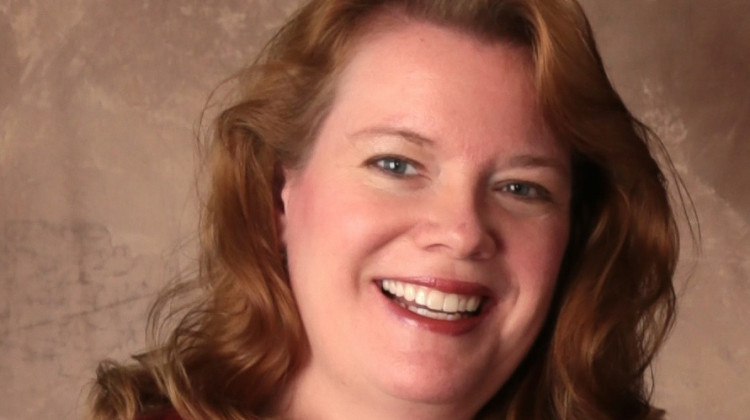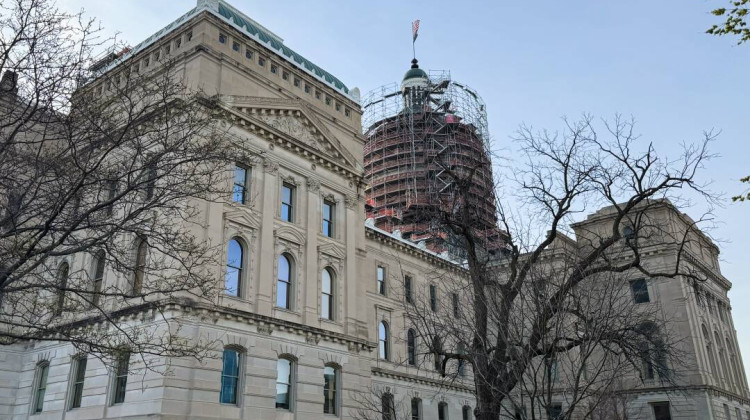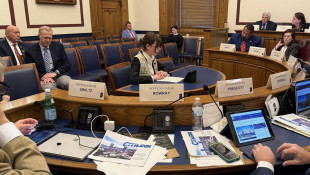It's no question the weather's been brutal for some communities, including Washington, Ill., a town of 15,000 in the central part of the state. When a tornado ripped through the area last November three people died and more than a thousand homes were damaged.
Displaced residents recently filled the pews at a local church for a town meeting. Some wore t-shirts with the slogan "Washington Strong." Linda and Jim Deaton say that just before the winter tornado destroyed their home, they scooped up their two small dogs and ran for the basement.
"You could hear the glass breaking, the boards, the big two-by-fours breaking, you could feel the impact," Jim says. Linda adds, "When we came up from the basement and I looked out and just saw the devastation in my neighborhood, I honestly thought all my neighbors were gone."
It's up to a state's governor to ask for disaster declarations and President Obama did declare nine Illinois counties ravaged by this tornado a federal disaster area. FEMA has given grants to individuals and families, but when it comes to federal money for reimbursing local governments, much of the cost for debris removal or repairing damaged roads, for example, the answer for this tornado has been, "No."
"When you look at a document and they say there's not enough devastation, my thing is, were you here?" Washington Mayor Gary Manier says. "Over 800 homes were inhabitable, 596 totally destroyed. It was pretty devastating."
FEMA has provided public assistance funds for Illinois municipalities in the past, most recently in the spring of 2013 when there was extensive flooding in about half of the state. The agency's decisions are based, in part, on a formula FEMA uses to determine whether states and local governments can handle a disaster on their own, says Patti Thompson, a spokewoman for the state's emergency management agency. It's a simple equation: a state's population, for example nearly 13 million in Illinois, is multiplied by a number the agency figures a state can pay for every resident before it needs the federal government to step in.
This year, that number is $1.39 per resident. If you do the math the sum is typically a cost of damages threshold a state must first meet, Thompson says. For the state of Illinois, that currently is a little more than $17.8 million.
When it appealed its first rejection, Illinois officials told FEMA they expected the damage expenses for the state would reach $21 million.
"I thought it was a slam dunk," Manier says. "I thought it was a done deal."
But FEMA's assessment was much lower, just $7 million and nowhere near the threshold.
If this town was not in Illinois but in Nebraska, with a population fewer than two million, FEMA would likely have approved requests for public assistance funds since the threshold there would have been one-eighth of what it was in Illinois. Illinois Sens. Mark Kirk and Dick Durbin say that type of disparity is just wrong and have reintroduced legislation to address it. Durbin first talked about it on the Senate floor two years ago.
"Tomorrow, I say to my colleagues, it could be your state," Durbin says. "You could find out that a devastating natural disaster does not qualify for federal disaster assistance simply because of the population of your state."
The bill, which is now in committee, puts less emphasis on the state's population and assigns specific values to the economic circumstances of the affected area.
But there's a twist to "the change the formula" argument: After FEMA said "No" twice, Illinois Gov. Pat Quinn told the communities hit hard by the tornado that the state will instead use $45 million in capital and emergency funds to help them.
"We are not going to look at that money in a bank vault when we have a natural disaster," Quinn says. "We've got to do something."
That, some would argue, proves that FEMA's formula is correct, that states with communities big and small can find the resources to take care of their own in the wake of a disaster.
9(MDEwMDc1MzM3MDEzNDczOTA0MDc1MzViMQ001))
 DONATE
DONATE







 View More Articles
View More Articles


 Support WFYI. We can't do it without you.
Support WFYI. We can't do it without you.